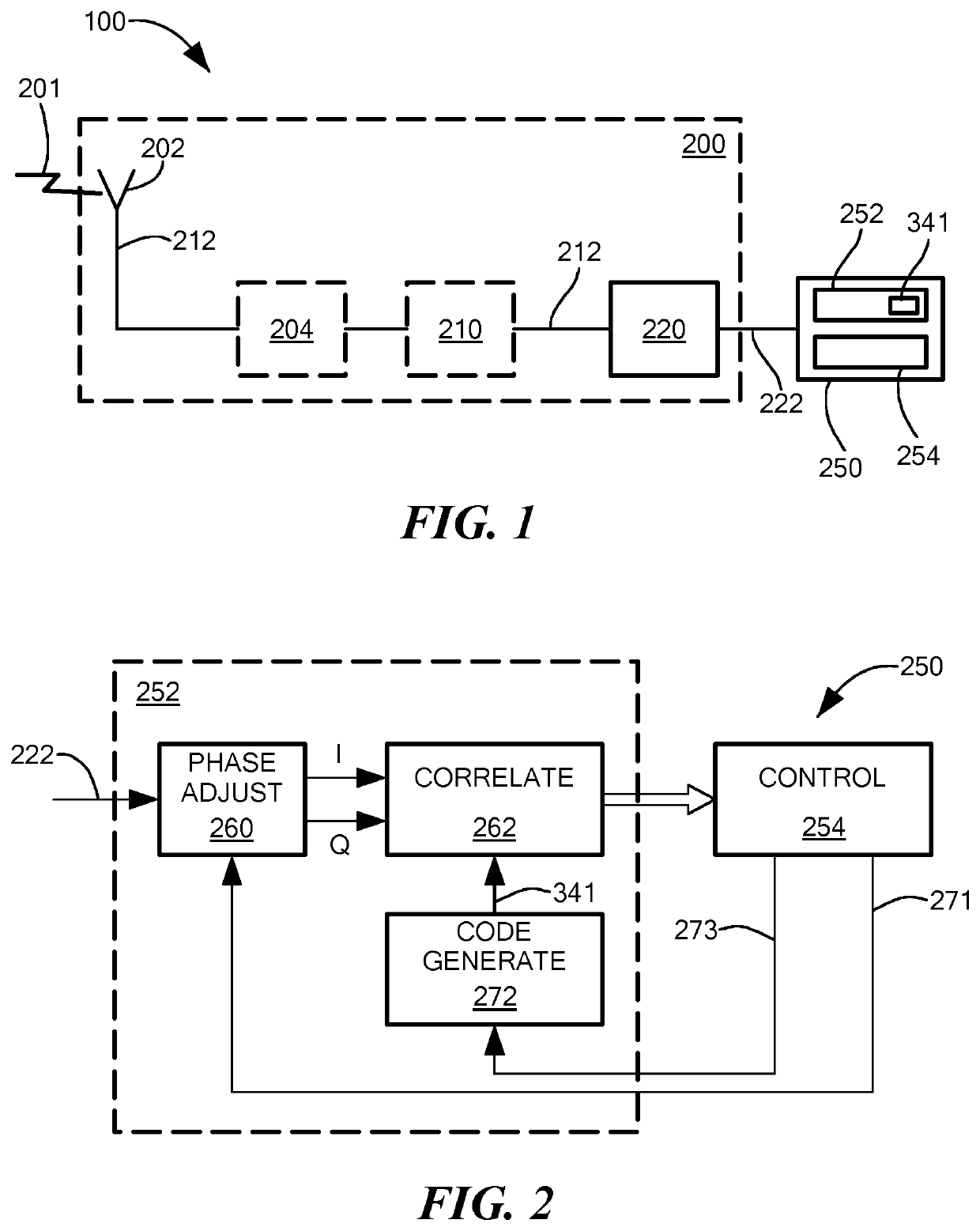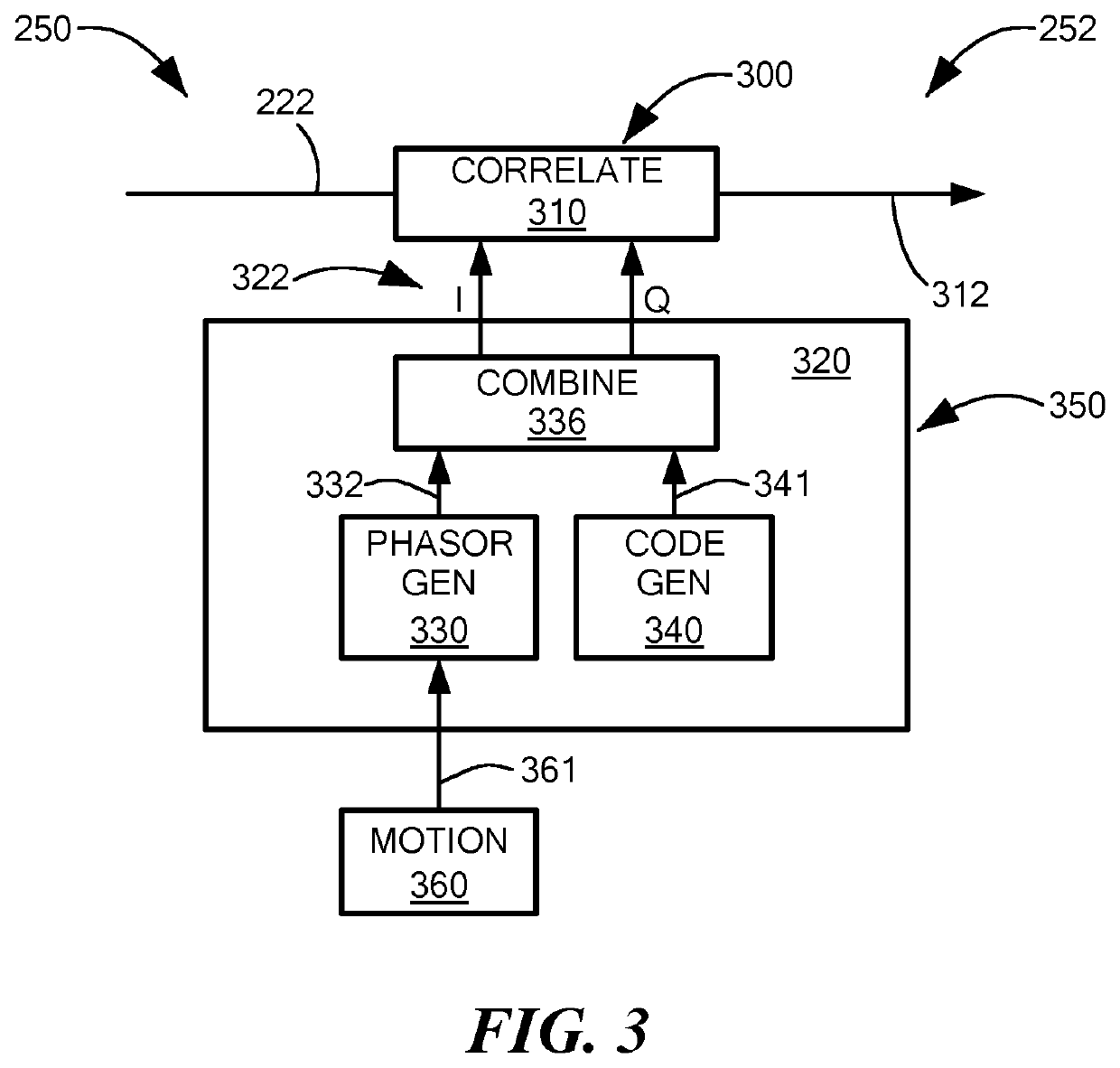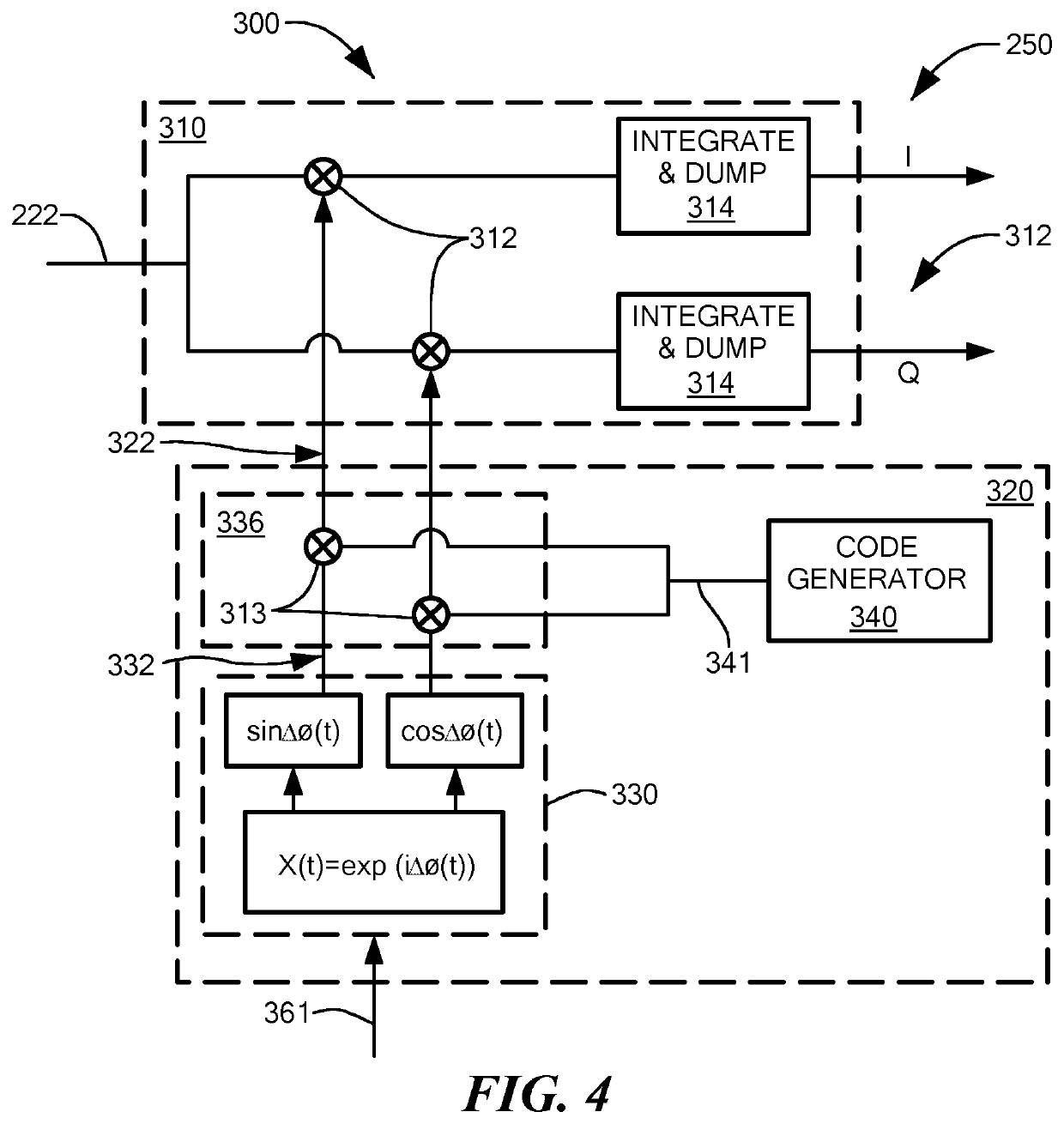Method and system for correcting the frequency or phase of a local signal generated using a local oscillator
a local signal and frequency correction technology, applied in surveying and navigation, instruments, navigation instruments, etc., can solve the problems of weak signals that require a long integration period, local oscillators are relatively unstable, and are impractical for consumer products such as mobile phones
- Summary
- Abstract
- Description
- Claims
- Application Information
AI Technical Summary
Benefits of technology
Problems solved by technology
Method used
Image
Examples
Embodiment Construction
[0071]FIG. 20 is a schematic view of a user 2 holding a positioning device 4 in an urban environment (to represent a challenging positioning environment). In this example the positioning device 4 can receive signals from first, second and third positioning satellites 6, 8, 10. The positioning device 4 can also receive signals from a terrestrial transmitter 12. The signal from the satellite 6 and the terrestrial transmitter 12 are received through buildings. These signals are attenuated by the material of the buildings, which means that the signal strengths can be low, especially for the signals received from the distant satellite 6. In some instances the signal strengths may be too low for use in positioning calculations, unless the signals are integrated over a relatively long period of time (perhaps as much as 1 second, or longer). Received signals may also be subject to multipath, which represents an additional complication. In FIG. 20 the signals from satellites 8, 10 can be rec...
PUM
 Login to View More
Login to View More Abstract
Description
Claims
Application Information
 Login to View More
Login to View More - R&D
- Intellectual Property
- Life Sciences
- Materials
- Tech Scout
- Unparalleled Data Quality
- Higher Quality Content
- 60% Fewer Hallucinations
Browse by: Latest US Patents, China's latest patents, Technical Efficacy Thesaurus, Application Domain, Technology Topic, Popular Technical Reports.
© 2025 PatSnap. All rights reserved.Legal|Privacy policy|Modern Slavery Act Transparency Statement|Sitemap|About US| Contact US: help@patsnap.com



